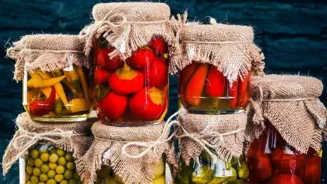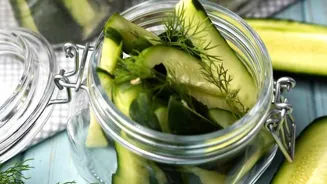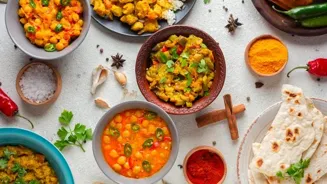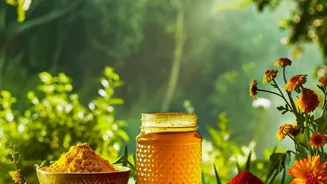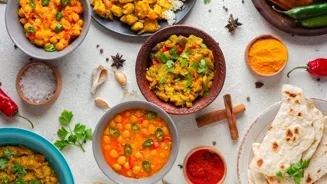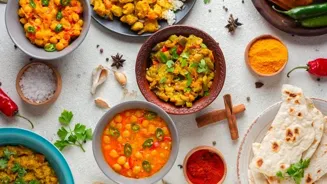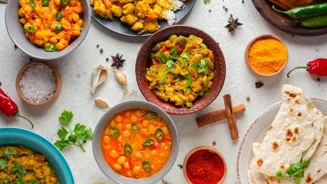Discover the art of making traditional Indian pickles at home! From fiery mango to sweet lemon, explore the flavors
India, a land renowned for its diverse culture and vibrant flavors, boasts a culinary
heritage that is as rich as it is varied. Among the many gems in the Indian food treasure chest, pickles, fondly known as 'achaar,' hold a special place.
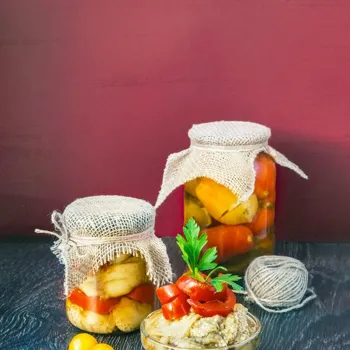
These tangy, spicy, and often sweet condiments are not merely side dishes but an integral part of the Indian dining experience, capable of elevating even the simplest meal into a gastronomic adventure.
From the fiery mango pickles of Andhra Pradesh to the sweet lemon pickles of Gujarat, each region has its own unique recipe and technique, passed down through generations, making pickle-making an art form in itself.
Making them at home is a rewarding experience, allowing you to control the ingredients and customize the flavors to your liking. Plus, nothing beats the satisfaction of enjoying a homemade pickle with your favorite Indian dishes.
Creating homemade pickles requires quality ingredients, spices, and oil for rich flavors
Embarking on the journey of homemade pickle creation requires understanding the basic principles and techniques involved. The foundation of any good pickle lies in the careful selection of ingredients.
Fresh, high-quality fruits and vegetables are essential, as they will determine the ultimate taste and texture of your pickle. Common choices include mangoes, lemons, limes, chilies, carrots, and ginger, but the possibilities are truly endless.
Once you've chosen your star ingredient, it's time to consider the spices. Achaar is all about balancing flavors, so a well-curated blend of spices is crucial.
Mustard seeds, fenugreek seeds, turmeric powder, red chili powder, coriander seeds, and asafoetida (hing) are common staples, but you can experiment with other spices to create your own unique flavor profile. Oil is another key component, acting as a preservative and adding richness to the pickle.
Traditionally, mustard oil is preferred for its pungent flavor and preservative properties, but you can also use sesame oil or groundnut oil.
Process of making classic mango pickle: prepare mangoes with salt, turmeric, sun-dry
Now that we have the ingredients sorted, let's dive into the process of making a classic mango pickle, a favorite in many Indian households. Firstly, you will need raw mangoes. Wash them properly and wipe them with a clean cloth taking away all the moisture.
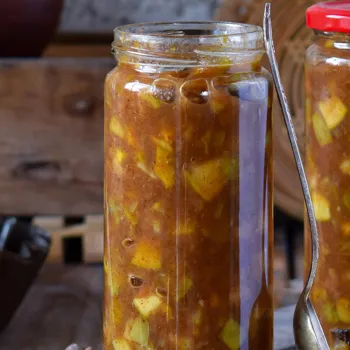
Then, cut the mangoes into large chunks, discarding the seed. Mix the mango pieces with turmeric powder and salt, coating them evenly. This helps to draw out excess moisture and prevent spoilage. Let the mangoes sit in the salt and turmeric mixture for at least 2-3 hours, or even overnight.
This crucial step helps to soften the mangoes and prepare them for the pickling process. Once the mangoes have sat, drain any excess liquid that has accumulated. Sunlight plays a major role, drying them in sunlight before the mixture.
Blend spices, coat mango, add hot oil to prevent spoilage
Next, prepare the spice blend. In a dry pan, lightly roast mustard seeds, fenugreek seeds, coriander seeds, and red chilies until fragrant. Be careful not to burn them, as this will make the pickle bitter. Grind the roasted spices into a coarse powder using a spice grinder or mortar and pestle.
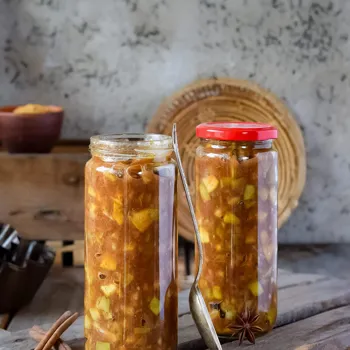
In a large bowl, combine the mango pieces, the spice powder, and asafoetida (hing). Mix well to ensure that the mangoes are evenly coated with the spices. Heat mustard oil in a pan until it reaches smoking point. Allow the oil to cool slightly before pouring it over the mango mixture.
The hot oil helps to cook the spices and release their flavors. Make sure the mango pieces are fully immersed in oil. This will prevent the pickle from spoiling
Transfer pickle to sterilized jar, sun-dry for flavor, store for months
Transfer the pickle to a clean, dry glass jar. Make sure the jar is sterilized to prevent any contamination. Cover the jar with a clean cloth and secure it with a rubber band. Place the jar in direct sunlight for several days, stirring the pickle occasionally.
Sunlight helps to further dry out the mangoes and enhance the flavors of the pickle. This process can take anywhere from 1 week to 2 weeks, depending on the intensity of the sunlight. Once the pickle has matured for a week or two, it is ready to be enjoyed. Store it in a cool, dry place.
Traditional Indian pickles can last for months, or even years, if stored properly. A properly made mango pickle will be a delightful combination of sourness, spiciness, and tanginess, a true testament to the magic of Indian spices.
Indian pickles offer diverse flavors like lemon, a sweet-sour favorite
While mango pickle is a classic, the world of Indian pickles is vast and diverse. Lemon pickle, for instance, is another popular choice, known for its sweet and sour flavor. To make lemon pickle, you'll need fresh lemons, salt, sugar, and a blend of spices similar to those used in mango pickle.
The lemons are typically cut into quarters or eighths and mixed with salt. This will cause the lemons to soften and release their juices. After a few days, the lemons are then cooked with sugar and spices until they are tender and the syrup has thickened.
The resulting pickle is a delightful balance of sweet and sour, perfect as a condiment or even as a spread on bread. Remember to always use clean and dry utensils during the pickling process to prevent contamination and ensure the longevity of your pickles.
